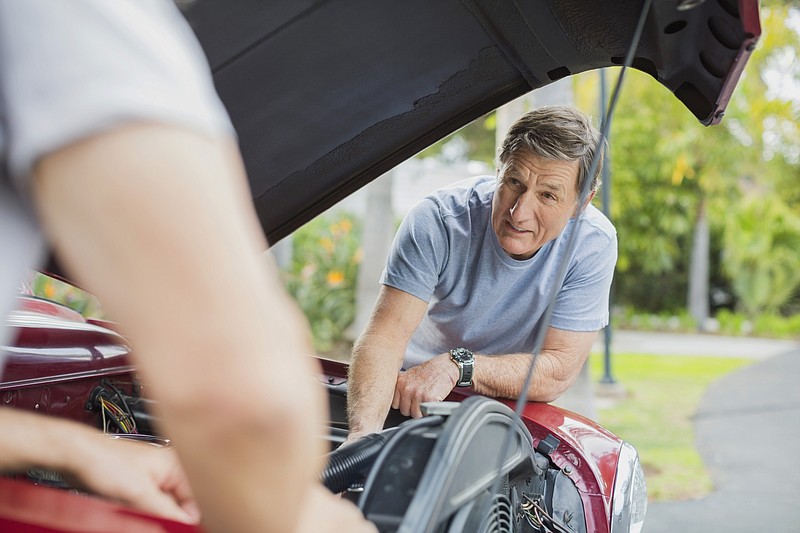Q: The new car I just purchased has a push-button parking brake. I like it but wonder if I can trust it on the steep street I park on. How do these things work?
-Melody C.
A: Electric parking brakes, or EPBs, have become popular as they provide a reliable and convenient means of operating the parking brake and free up space in the passenger compartment that would have otherwise been needed for a hand- or foot-operated mechanism. Some EPBs will set automatically as you place the transmission into park and self-release as you begin to drive away, should you neglect to release the brake with the button.
EPBs come in two forms: cable-operated and caliper-actuated. Vehicles that use a cable employ an electric actuator that cinches the main cable tight. This typically makes a sound that reassures you proper action has been taken. Some vehicles are smart enough to estimate the driveway or road slope and choose the appropriate clamping force, and some can detect vehicle movement after the brake is set and recinch the cable as needed.
Caliper-actuated EPB systems employ an electric motor and actuator into each of the rear disc brake calipers (the clamshell device that uses hydraulic force to clamp the brake pads against the rotor during normal braking). VW's Passat includes the control module within the brake calipers rather than mounting it elsewhere in the vehicle. Caliper actuators provide the most direct and simple means of applying the needed force, without the need for periodic cable adjustment or maintenance. A sound can also be heard as the brake pads are mashed into the rotors. Unfortunately, this design leaves the do-it-yourself owner out in the cold, as it requires the use of a pro-grade scan tool to retract the caliper pistons when new brake pads are installed and possibly to take up slack after assembly, setting pad clearance.
I feel confident in these systems holding a vehicle in place regardless of slope. After reading your letter, I tried applying the EPB on my Volt at about 5 mph and it was like throwing out a giant anchor on a zero-stretch chain! It's still recommended that one set the parking brake and allow the vehicle to settle against it prior to engaging park. A manual transmission should also be placed in first or reverse gear so the engine can provide additional rolling resistance.
Q: My truck just needed to have its "MAF sensor" replaced, at high cost. What does this part do? How do I know it really needed replacement?
-Arnie T.
A: A mass airflow, or MAF, sensor measures the volume and density of air entering the engine. This information is needed in order to inject the proper amount of fuel for optimum performance and fuel economy and reduced exhaust emissions. Most MAF sensors employ a heated element and infer air mass and flow by looking at how much electrical energy is needed to keep the element at a precise temperature as air passes across it. A diagnostic trouble code, properly diagnosed, might pinpoint a faulty sensor. Sometimes a dirty or contaminated element can cause poor engine performance but sneak just under the on-board diagnostic system's radar with no code being set. In many cases a MAF sensor element can be carefully cleaned, avoiding the need for replacement.
ABOUT THE WRITER
Brad Bergholdt is an automotive technology instructor at Evergreen Valley College in San Jose, Calif. Readers may send him email at [email protected]; he cannot make personal replies.

